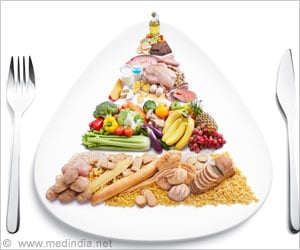Finding enough to eat is much more problematic in winter, although the temperate climates of central Europe provide plentiful food in summer.

It is clear that red deer must minimise their energy requirements to be able to survive on little but their own body fat over the long winter season. To understand how they do so, Christopher Turbill and colleagues at the University of Veterinary Medicine, Vienna inserted special transmitters into the reticulum (the foremost part of the stomach) of 15 female red deer and monitored the animals' heart rate and stomach temperature for a period of 18 months, including two winters. The deer lived under near-natural conditions but their food intake was tightly controlled, with the amount and the protein richness determined by the scientists. The air temperature was also recorded and statistical modeling was used to untangle the effects of the various different factors – including swallowing snow, which naturally led to a rapid and dramatic decrease in stomach temperature – on the animals' metabolism.
The slow season
The most striking result was that the deer lowered their heart rates in winter regardless of how much food they ate. A heart rate of 65-70 beats per minute in May declined gradually to about 40 beats per minute throughout the winter, even when the deer were supplied with plenty of protein-rich food. Heart rate is a good indicator of metabolic rate, so as Turbill says, "The decrease in metabolism occurred exactly when food is normally scarce – although our animals always had enough to eat – and this shows that the deer are somehow 'programmed' to conserve reserves during winter." The enormous rise in heart rate in spring, at the start of the breeding season, was not associated with any change in food availability so also forms part of the animals' internal programming. As expected, when the deer were offered less food, their heart rates dropped even further. Surprisingly, however, this effect could also be observed in summer and was not solely caused by the reduced amount of digestion, showing that red deer react both to the winter season and to food shortages by actively lowering their metabolism.
Turbill, Arnold and coworkers found that the lowered heart rate was associated with a reduction in stomach (core body) temperature, suggesting that the deer adjust energy expenditure by regulating their internal heat production. However, relatively small changes in stomach temperature had larger than expected effects on metabolic rate, implying that the animals have an additional mechanism for saving energy. The key to explaining the results came from previous studies in Arnold's group, which had shown that red deer can greatly lower the temperature of their legs and other extremities, especially during cold winter nights. It thus seems likely that a small reduction in stomach temperature indicates a much greater reduction in the temperature of the deer's entire body, which could explain the substantial reduction in heart rate and metabolism. "Perhaps larger animals are able to make use of their size to enable temperature gradients," Arnold proposes. "This would enable them to reduce their metabolism dramatically without requiring a big decrease in core body temperature. It seems as though peripheral cooling might be an important mechanism for red deer – and maybe other large mammals – to conserve energy during winter and when food is scarce."
Advertisement











